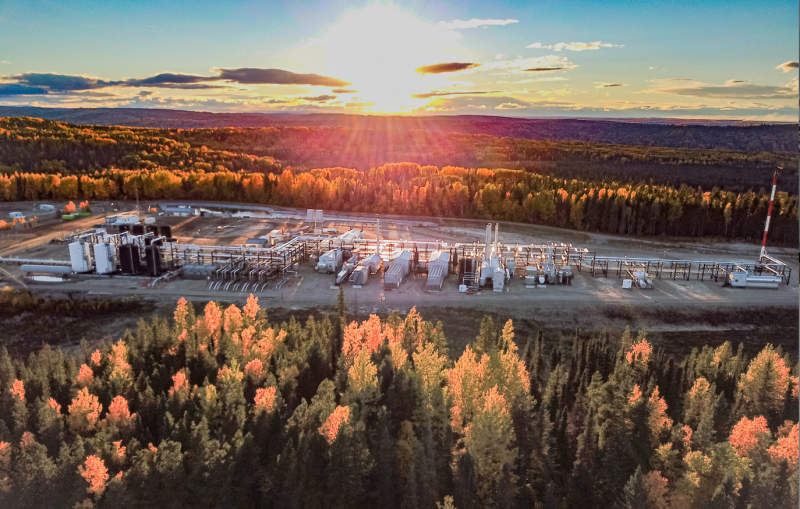Calgary-based Strathcona Resources Ltd. is selling its Montney unconventional assets for CAD 2.84 billion, according to a 14 May announcement in which Strathcona also reported closing on its acquisition of Alberta’s Hardisty Rail Terminal (HRT) where export pipelines to the US originate.
Strathcona’s sale of Montney assets is split into three transactions and supports the company’s strategy to consolidate its core assets to focus on thermal oil and enhanced oil recovery operations.
The largest of the deals is ARC Resources Ltd.’s acquisition of Kakwa for approximately CAD 1.650 million in cash and CAD 45 million in assumed lease obligations.
Kakwa is a condensate-rich Montney oil and natural gas asset located in the Kakwa region of Alberta, Canada, directly adjacent to ARC Resources’ existing Kakwa development. The acquisition is expected to boost ARC’s Kakwa production by 24%, extend its Montney inventory, and reinforce its position as a leading Montney and condensate producer in Canada.
Grande Prairie assets in northwest Alberta, known for the production of natural gas, natural gas liquids, and light oil, primarily from the Montney formation, are being sold to an undisclosed buyer for CAD 850 million in total value (CAD 750 million in cash and approximately CAD 100 million in assumed lease obligations).
Tourmaline Oil Corp. is buying the Groundbirch asset for CAD 291.5 million in common shares of Tourmaline (in which Strathcona remains a shareholder). Located near Groundbirch, British Columbia, it is recognized as one of Canada’s most productive natural gas regions.
HRT is Western Canada’s largest crude-by-rail terminal, according to Houston-based USD Partners, which sold the rail hub to Strathcona for CAD 45 million in April.
By combining HRT's 262,000 B/D capacity and year-to-date throughput of approximately 50,000 B/D with its Hamlin Rail Terminal in Saskatchewan, Canada, Strathcona is positioned to handle some 80% of Western Canada’s current crude-by-rail volumes. The Hamlin Rail Terminal ships approximately 30,000 B/D directly to the US Gulf Coast, according to Strathcona’s 4Q 2023 results.
Groundbirch is expected to close in Q2 this year, while Kakwa and Grande Prairie are expected to be finalized in Q3.
Pure-Play Heavy Oil
Once the Montney sale is complete, Strathcona will be a pure-play heavy oil company producing approximately 120,000 BOPD (95,000 B/D thermal, 25,000 B/D conventional) with a 50-year 2P reserve life index and positive net cash (including marketable securities), the company said in its release.
To this end, on 15 May (a day after the announcement of the Montney divestiture,) Strathcona issued another press release stating its intent to acquire all of the issued and outstanding common shares of MEG Energy not already owned by Strathcona or its affiliates,
A combined MEG Energy and Strathcona would “unify two 100,000+ B/D heavy oil ‘pure plays’ with near identical netbacks and reserve life indexes, both focused on SAGD [steam-assisted gravity drainage] oil sands development,” Strathcona said in its release.
MEG Energy said in a statement on 16 May that its board of directors would consider the offer “if and when it is received.”
Updated 2025 Guidance
Having factored the Montney divestiture into its revised guidance, Strathcona is projecting its Q2 2025 production at 180,000 BOED and its full-year 2025 production to range between 150,000 and160,000 BOED, with 120,000 to 125,000 B/D.
The company’s long-range plan forecasts growth to 195,000 B/D by 2031 with most of that growth coming from Strathcona’s thermal properties, with thermal production in Cold Lake and Lloydminster expected to reach nearly 170,000 B/D in 2031.
Strathcona noted that its current long-range plan only reflects the development of existing projects and brownfield expansions and excludes greenfield projects.
